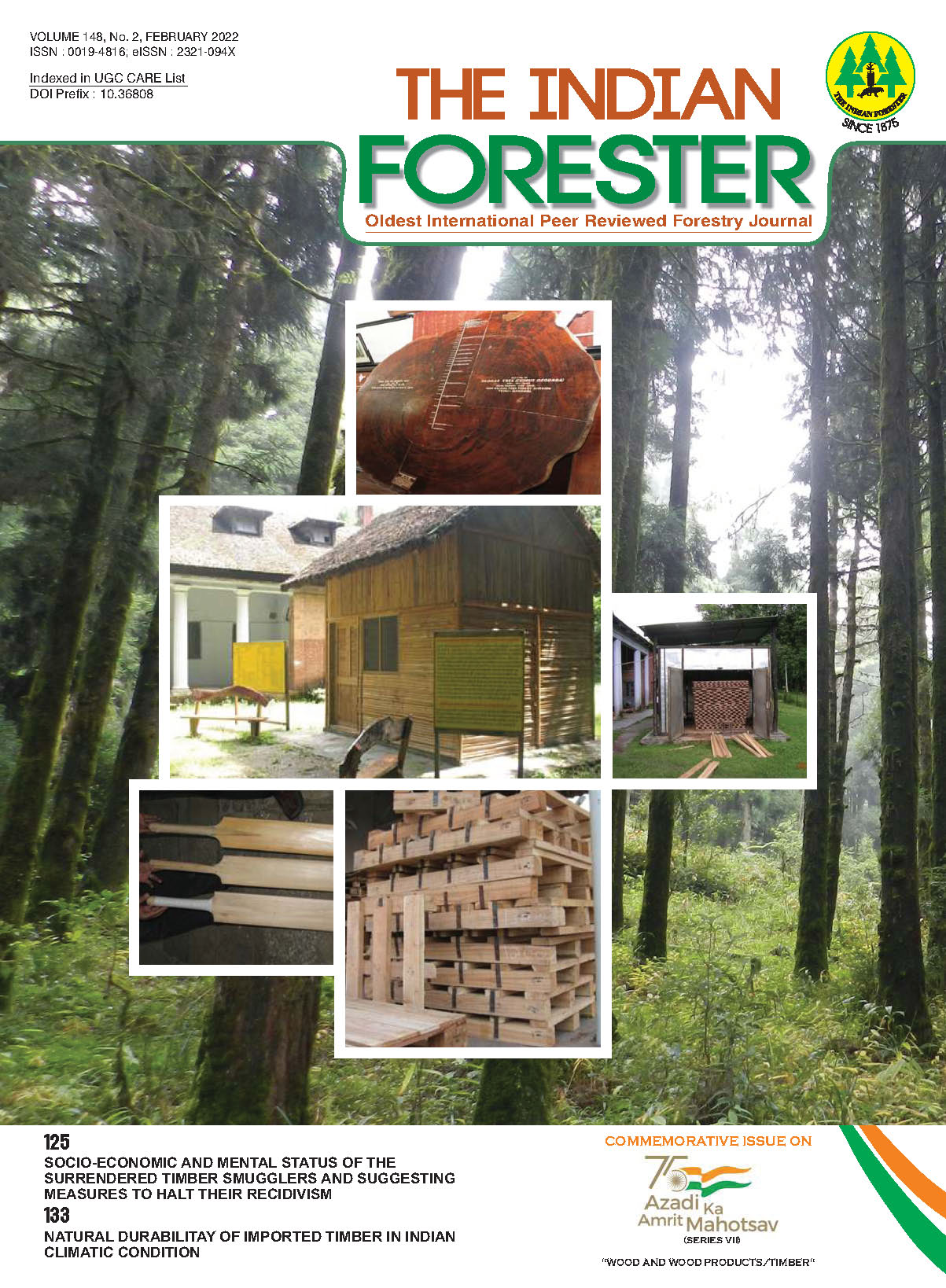Some Common Flora of Temple City of Odisha, India: Sources for Ethno-Medico-Cultural Values
DOI:
https://doi.org/10.36808/if/2022/v148i2/156797Keywords:
Bhubaneswar, Urban Areas, Floral Diversity, Medicinal Values, Cultural Values.Abstract
Floral wealth maintain the urban environment and balance the ecological systems. Keeping this in view, present study was designed to enumerate the plant species available in temple city of Odisha. The survey was carried out during 2019-2020 in the urban and semi-urban areas of Bhubaneswar, Odisha. The results revealed that 175 plants were commonly available belong to 59 families. The medicinal, ecological, economic and sociocultural values of enumerated plants are discussed. Present study highlights the importance of floral wealth in urban areas and recommend to do plantation in study areas to keep environment clean and pollution free.References
Dalasingh B.K., Mahalik G. and Parida S. (2018). Study on the use of plants and plant parts in Durga puja for worshipping of the Goddess Durga in Odisha, India. International Journal of Management, 8(12): 2911-2918.
Das M., Barick L.D., Mondal D.N. and Hazara J. (2015). Edible flowers of India with multiple medicinal uses: an overview. International Journal of Herbal Medicine, 3(2): 07-09.
Ghosh P., Chatterjee S., Das P., Baerjee A., Karmakar S. and Mahapatra S. (2018). Natural habitat, phytochemistry and pharmacological properties of a medicinal weed- Cleome rutidosperma DC. (Cleomaceae): a comprehensive review. International Journal of Pharmaceutical Sciences and Research, 10(4): 1605-1612.
Gopal N.M., Tejaswini J., Mantry S. and Kumar S.A. (2014). International standards of medicinal plants. International Journal of Innovative, 2(10): 2347-2154.
Gopukumar S.T. and Praseetha P.K. (2015). Ficus benghalensis Linn- The sacred Indian medicinal tree with potent pharmacological remedies. International Journal of Pharmaceutical Sciences, 32(1): 223-227.
Jhade D., Ahirwar D., Sharma N.K., Jain R. and Gupta S. (2009). Butea monosperma (Lam.) Taubert.: review. Journal of Pharmacy research, 2(7): 1181-1183.
Khristi V. and Patel V.H. (2016). Therapeutic potential of Hibiscus rosa sinensis: a review. International Journal of Nutrition and Diseases, 4(2): 105-123.
Kumar S. and Satapathy M.K. (2011). Medicinal Plants in an urban environment; herbaceous medicinal flora from the campus of Regional Institute of Education, Odisha. International Journal of Pharmacy and Life Sciences, 2(11): 1206-1210.
Kumar S., Das G., Shin H.G., Kumar P. and Patra J.K. (2018). Diversity of Plant species in the Steel city of Odisha, India: Ethnobotany and implications for Conservation of Urban BioResources. Brazilian Archives of Biology and Technology, 61: 1-19.
Mohanty R., Tripathy B.K. and Panda T. (2012). Role of temples and other holy places in plant conservation of Odisha, India. International Journal of Conservation Science, 3(4): 301-308.
Pandey D. and Pandey V.C. (2016). Sacred plants from ancient to modern era: traditional worshipping towards plants conservation. Society for Tropical Plant Research, 3(1): 136141.
Robinson C. and Cush D. (1997). The Sacred Cow: hinduism and ecology. Journal of Beliefs and values: Studies in Religion and Education, 18(1): 25-37.
Sahu G. and Gupta P.K. (2012). A review on Bauhinia variegata Linn. International Research Journal of Pharmacy, 3(1): 48-51.
Saxena H.O. and Brahmam M. (1996). The Flora of Orissa, Volume I-IV. Orissa Forest Development Corporation, Bhubaneswar, pp 2918.
Sharma J. and Devi A. (2015). Study on traditional worshiping plants in Hindu religion from Nalbari and Sonitpur districts of Assam. International Journal of Scientific and Research Publications, 5(5): 1-5.
Sharmeen R., Hossain M., Rahman M., Foysal M. and Miah M. (2012). In-vitro antibacterial activity of herbal aqueous extract against multi-drug resistant Klebsiella sp. Isolated from human clinical samples. International Current Pharmaceutical Journal, 1(6): 133-137.
Shukla R., Sharma S.B., Puri D., Prabhu K.M. and Murthy P.S. (2000). Medicinal plants treatment of Diabetes mellitus. Indian Journal of Clinical Biochemistry, 15: 169-177.
Subhadarsini S., Nayak S.K. and Satapathy K.B. (2016). Study of floral diversity with special reference to hydrophytes in Bhubaneswar and its adjoining areas, Odisha, India. International Research Journal of Biological Sciences, 5(9): 1-7.
Downloads
Downloads
Additional Files
Published
How to Cite
Issue
Section
License
Unless otherwise stated, copyright or similar rights in all materials presented on the site, including graphical images, are owned by Indian Forester.





